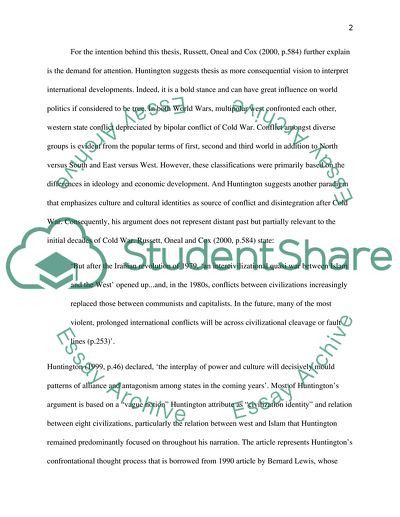Cite this document
(“Is the Huntington Thesis of the Clash of Civilizations Inevitable Research Paper”, n.d.)
Is the Huntington Thesis of the Clash of Civilizations Inevitable Research Paper. Retrieved from https://studentshare.org/politics/1738260-is-the-huntington-thesis-the-clash-of-civilizations-inevitable
Is the Huntington Thesis of the Clash of Civilizations Inevitable Research Paper. Retrieved from https://studentshare.org/politics/1738260-is-the-huntington-thesis-the-clash-of-civilizations-inevitable
(Is the Huntington Thesis of the Clash of Civilizations Inevitable Research Paper)
Is the Huntington Thesis of the Clash of Civilizations Inevitable Research Paper. https://studentshare.org/politics/1738260-is-the-huntington-thesis-the-clash-of-civilizations-inevitable.
Is the Huntington Thesis of the Clash of Civilizations Inevitable Research Paper. https://studentshare.org/politics/1738260-is-the-huntington-thesis-the-clash-of-civilizations-inevitable.
“Is the Huntington Thesis of the Clash of Civilizations Inevitable Research Paper”, n.d. https://studentshare.org/politics/1738260-is-the-huntington-thesis-the-clash-of-civilizations-inevitable.


